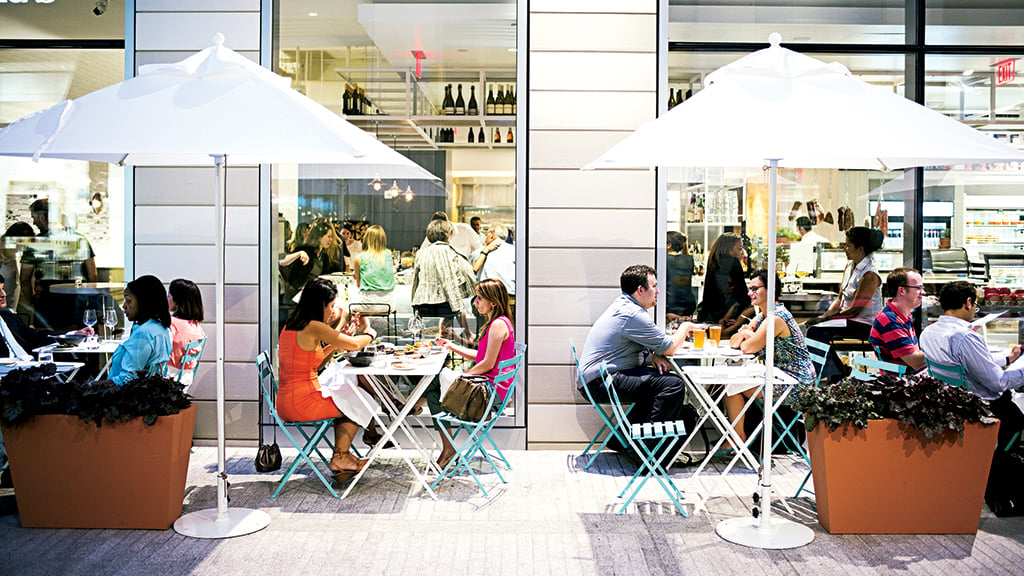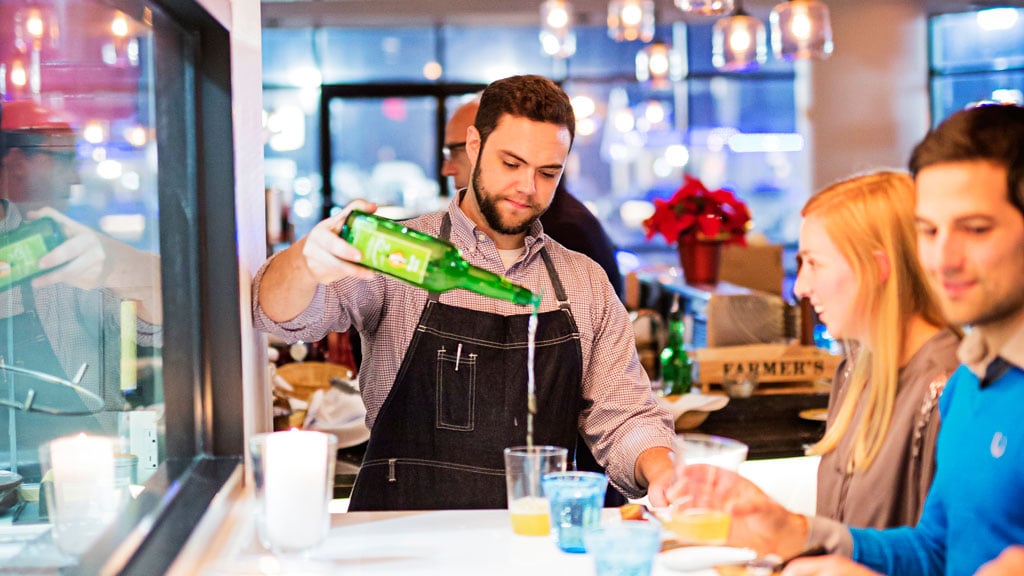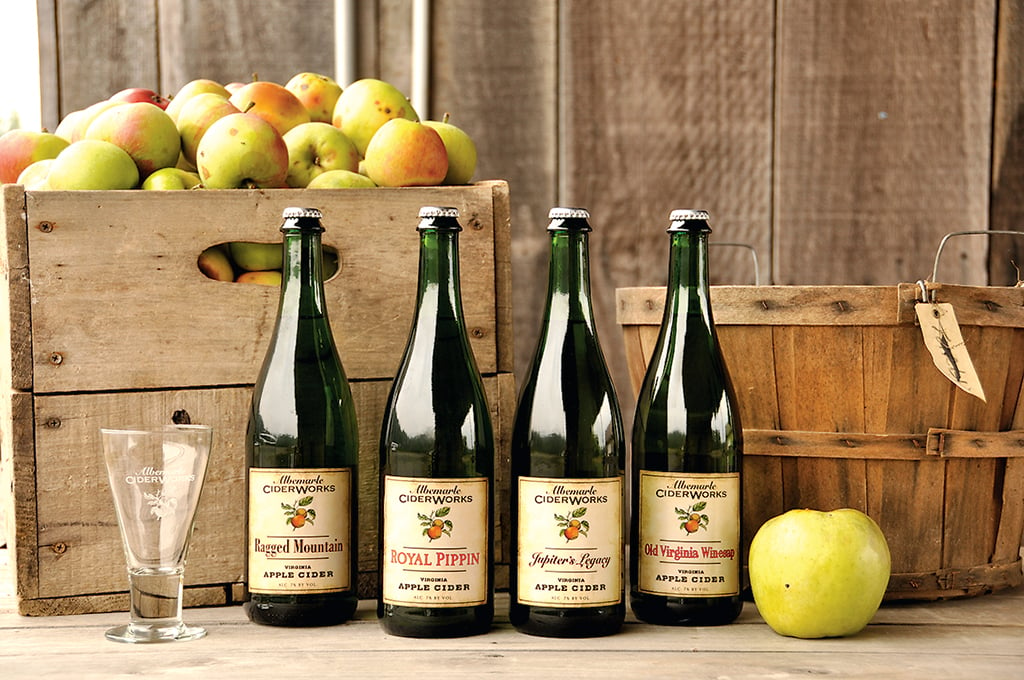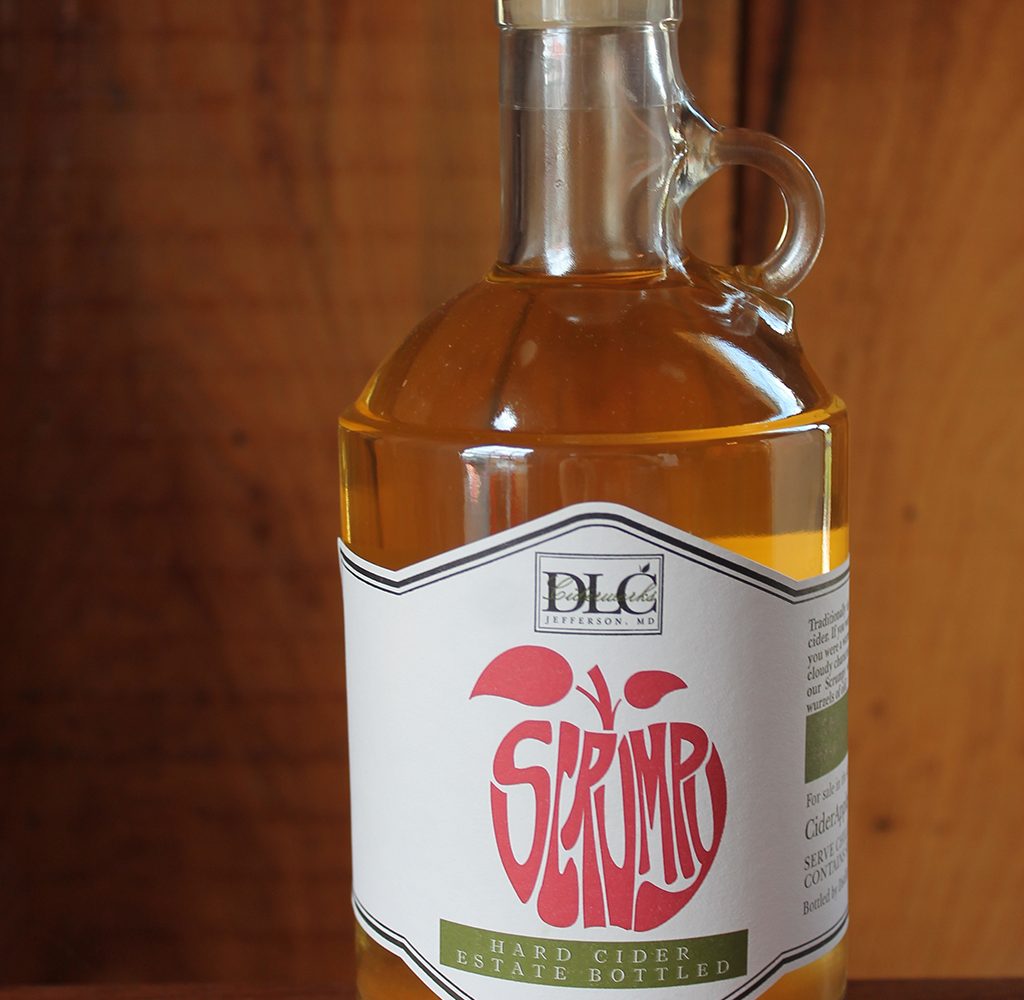I began my search for the perfect pizza in Naples. While most Mediterranean cuisines have some form of flatbread–and have had for centuries–it was in Naples that that the pizza developed into something approximating the tomato-and-cheese-topped slabs of dough that Americans now eat by the millions.
Neapolitans were among the first Europeans to take to the tomato, a fruit introduced from the New World and widely thought to be poisonous. The Campania region was also home to herds of bufala, water buffalo imported from India, and had developed a cheese, mozzarella di bufala, from their milk.
The bread, the tomato, and the cheese, along with a sprinkling of basil, found their calling in 1871 when a restaurateur, Raffaele Esposito, had the idea of combining them in honor of Princess Margherita of Savoy. The tomatoes, mozzarella, and basil duplicated the colors of the flag of the recently unified Italian state.
Pizza alla Margherita, the direct ancestor of the modern pizza, was brought to America by Italian immigrants in the late 19th century and has become, along with the hamburger and hot dog, one of America's national foods.
Neapolitans take their pizza so seriously that they have formed an association, Verace Pizza Napoletana, to preserve the standards of Neapolitan pizza. They've succeeded in having Neapolitan pizza declared a "DOC" (denominazione di orgine controllata) product by the Italian government, meaning that its name, like Chianti and prosciutto di Parma, is protected.
The rules for authentic Neapolitan pizza serve primarily to guarantee its simplicity. The dough can be made only with finely ground flour, yeast, and water, and it must be shaped by hand, without the use of a rolling pin. The pizza must be cooked on the floor of a wood-burning oven, not in a pan. Only four variations are allowed: the Margherita, with tomato, olive oil, grated Parmesan, and mozzarella; the Marinara, with tomato, olive oil, oregano, and garlic; formaggio e pomodoro, with tomato, olive oil, and grated Parmesan; and the ripieno, a calzone filled with ricotta or mozzarella, olive oil, and salami. "All types of pizza," the rules say, "are agreeable to basil leaves."
I had a free Saturday afternoon in Naples, so I engaged a guide to help me get to the most pizzerias in the shortest time. The guide, proud of the history and culture of her city, kept proposing detours to visit churches. I pushed her instead from pizzeria to pizzeria.
I s tarted my naples pizza orgy with a preconception: that the pizza at Pizzeria Paradiso near DC's Dupont Circle was the best pizza I'd ever eaten. Good bread is the star of the show at Pizzeria Paradiso. It's cooked on the floor of an intensely hot wood-burning oven. It puffs up nicely–the edge has a crackling crust and a soft interior. The middle of the crust is cooked through with occasional charred spots. The toppings are applied sparely. The best pizzas are the house specialities, traditional, like the Margherita, or innovative, still using authentic ingredients, like the Atomica. In Naples, some of my preconceptions were confirmed and others challenged.
In Naples, pizza is a way of life. "Pizzeria" is part of the name of almost every restaurant, however fancy or humble. Pizzerias are crowded with families and singles from noon until late at night.
My first stop was Antica Pizzeria da Michele on Via Tribunali, in the oldest part of the city. It has been around since 1936 but got lots of publicity when President Clinton went there during a G7 conference in 1994. It's everybody's idea of what a Neapolitan pizzeria should be–crowded and noisy with smart-aleck waiters. You have to go through the kitchen to get to the warren of dining rooms upstairs.
My first surprise was that the dough is patted out on a floured surface, not twirled dramatically in the air. The rules say Neapolitan pizza should be "soft, well cooked, fragrant, and enclosed in a high, soft edge of crust." To achieve the soft texture, the dough must be handled fairly gently to keep from exciting the gluten and toughening the crust. Neapolitans often eat a slice of pizza by rolling it, and the edge of the crust should be capable of being rolled without cracking. Every pizza I ate in Naples had a softer crust than expected–certainly flavorful, baked through with occasional charred spots, but softer than the crusts on most American pizzas.
My second surprise was that DOC Neapolitan pizza is not the rule in Naples. L'Antica Pizzeria da Michele on Via Cesare Sersale, which still has its original tables and chairs from the 1880s, serves Marinaras and Margheritas–the only variation permitted is double mozzarella. Most places serve these, but almost every pizzeria also has its house specialties. Di Matteo has a fried pizza stuffed with ham, ricotta, and provola cheese–terrific. The house specialty at Antica Pizzeria dell'Angelo is a delicious pizza with a crust stuffed with ricotta at the edges;Pizza Hut did not invent the stuffed-crust pizza. Umberto on Via Alabardieri does a very good job with traditional pizzas, but its menu also includes a section called Per i piu'giovani (For the Younger), with such oddities as the Krucca (the Italian nickname for Germans), topped with wurst, French fries, and mozzarella.
The third surprise–more like a revelation–was how the quality of the ingredients available to Neapolitan pizza makers can elevate oven-baked bread to ethereal heights. Mozzarella di bufala is not a rarity in Washington–it's shipped regularly from Italy by air and is even made locally by Blue Ridge Dairy in Lovettsville, Virginia. But the mozzarella di bufala in Italy has a fresh, tangy acidity that I've never tasted in the imported variety, perhaps because it can be made with unpasteurized milk. Tomatoes grown in the rich volcanic soil on the slopes of Vesuvius are also full of flavor, and the quality of the Italian salumi–salami and other cured meats–can't be experienced here because most meats cannot be imported.
I continued my pizza quest when I got back to Washington, eating pizza every day, sometimes twice a day, for two weeks. I found that our best pizzas are not necessarily authentic Neapolitan pizzas, but they do adhere to similar principles.
First, pizza is about good bread. Without a flavorful, good-textured crust, even the best ingredients can't salvage a pizza. Second, toppings must be applied sparely to allow the bread to rise properly. And finally, the more care taken with the pizza the better it is. The best pizzerias employ professionals who know their jobs and do them consistently well.
Pizza is one of our great bargain foods. It's generally priced between $12 and $20, depending on the size and number of toppings. It is at its best eaten straight from the oven–the quality begins to decline as soon as it's put in a box. Here's my list of the area's best pizzas, all worth the effort of going out to get.
Still the VERY BEST
Pizzeria Paradiso: "We're closer to Neapolitan pizza than we are to Pizza Hut," says owner Ruth Gresser, "but let's face it–we're an American pizzeria. The pizza of Naples was the starting point for what we do, but we're not trying to conform to any standard–I make pizza the way it tastes good to me."
Gresser says her dough is more like bread dough–"it has a higher gluten content, is chewier, and is not as soft as Neapolitan pizza." The dough rises, mostly under refrigeration, for 24 hours, then it's shaped into balls and rises another 6 to 12 hours. The resulting crust has edges that are crisp on the surface and soft in the middle, and the bottom is thoroughly cooked through. There are occasional delicious charred spots.
One secret, Gresser says, is not topping the pizza too heavily. Another is the oven temperature. The wood-burning oven cooks at about 650 degrees. Lower than that, Gresser says, and the pizza doesn't rise as it should–"it becomes more like a cracker than like bread." The need for a high oven temperature is one reason it's impossible to duplicate Neapolitan-style pizza at home. "I've taken the dough and the ingredients home and tried to make pizza in my home oven," Gresser says. "It was good, but it wasn't the same."
Pizzeria Paradiso is remarkable for its consistency. The pizzas have been uniformly good for the more than ten years that I've been eating there. Gresser attributes this to the stability of her staff. Two of her kitchen managers have been with her since the P Street location opened. One dough maker has been with her for eight years, the newest for four years.
Everybody has a favorite pizza at Pizzeria Paradiso. I love the Atomica, with spicy salami and hot-pepper flakes, and the simplicity and freshness of the Margherita. The best seller is the Paradiso, for which customers choose their own toppings, but the Boscoe, with tomatoes, mushrooms, spin-ach, red onion, and mozzarella, is not far behind. The pizza at the two Pizzeria Paradisos might not be strictly authentic, but it remains the most flavorful in town.
Pizzeria Paradiso, 2029 P St., NW, 202-223-1245 (Dupont Circle); 3282 M St., NW, 202-337-1245 (Georgetown). Open daily all day. Wheelchair accessible in Georgetown, not in Dupont.
Other Excellent Pizzas in the Neapolitan Spirit
2 Amys: The pizza at 2 Amys is certified authentic Neapolitan pizza by Verace Pizza Napoletana. Peter Pastan, co-owner of the restaurant with Tim Giametti, is also the owner of Obelisk on P Street and was one of the original partners in Pizzeria Paradiso. For this, his third restaurant, Pastan decided to create an authentic Neapolitan pizza. Dough is made in the morning, allowed to rise for a few hours, then rolled into individual balls, which ferment all night in the refrigerator. As the rules specify, the dough is shaped by hand just before the toppings are added.
"The idea," Pastan says, "is to keep as much air in the dough as possible." It is stretched by draping it over the hands, stretching it tight in the middle "to achieve the ideal of a crisp middle and a soft corona." The pies are topped more sparely than any I ate in Naples, and the result is drier than I prefer.
The wood-burning oven cooks at almost 700 degrees, but even more important than the temperature, Pastan feels, is to have a good flame that shoots across the top of the oven's dome, cooking the pies from the top as well as the bottom.
The menu at 2 Amys offers three DOC pizzas–a Marinara, a Margherita, and a Margherita Extra with cherry tomatoes. Of the non-DOC pizzas, the Etna is topped with a combination of eggplant confit, olives, and capers that would seem right at home in Naples, and the Calabrese, with tomato, onions, anchovy, and fresh mozzarella, is also delicious. The Margherita is the most popular pie, "but some people," Pastan says, "put weird things on them. The Margherita with pepperoni is my pet peeve."
2 Amys, 3715 Macomb St., NW; 202-885-5700. Open daily except Monday.
Coppi's: Since the closing of Coppi's Vigorelli on Connecticut Avenue, chef Elizabeth Bright and her husband and co-owner Pierre Mattia have been spending time at the original Coppi's on U Street, now called Coppi's Or-ganic. Elizabeth Bright's cooking is so good that it's a shame to eat only pizza.
The dough is honestly made with organic flour. The pizzas emerge in the wood-burning oven beautifully puffed and tender, and the set combinations of toppings complement one another beautifully. The Tapenade is a tasty combination of black-olive paste, mozzarella, and roasted red peppers. The Pancetta combines greens, pancetta, cremini mushrooms, red onions, and cheese. The Saraceno is a spicy treat with lamb sausage, smoked mozzarella, and Moroccan harissa sauce.
Coppi's Organic, 1414 U St., NW; 202-319-7773. Open for lunch Monday through Friday, dinner daily.
Faccia Luna: The original Faccia Luna opened in Glover Park in 1989. There are now locations in Clarendon, Old Town Alexandria, and State College, Pennsylvania–the owners were fraternity brothers at Penn State. Except in Alexandria, the pizzas are cooked in wood-fired ovens; the DC location has both gas and wood ovens. The dough is made fresh and allowed to age for one to two days. It's stretched on a surface coated with cornmeal, so the finished product has a pleasant crunch.
The crust puffs up beautifully–it's allowed to get a bit browner than that of many of its competitors. The Margherita uses fresh mozzarella and a delicious mixture of other cheeses. The white pizza is topped with cheese, good-quality olive oil, and spices. The Faccia Luna has mushrooms, roasted red peppers, and excellent sausage from Pennsylvania. It's good pizza in a very pleasant atmosphere.
Faccia Luna, 2400 Wisconsin Ave., NW, 202-337-3132; 823 S. Washington St., Alexandria, 703-838-5998; 2909 Wilson Blvd., Arlington, 703-276-3099. All open for lunch and dinner daily.
Bertucci's: Bertucci's, with a dozen locations in DC, Maryland, and Virginia, is also certified by Verace Pizza Napoletana as serving authentic Neapolitan pizza. Bertucci's pizza ovens are made of brick and fired with wood or gas. "The pizza is cooked by the heat stored in the bricks," says Rosario Del Nero, Bertucci's corporate chef. "The smell of wood smoke in the restaurant is appealing, but the pizza is cooked too low in the oven to absorb it."
The menu lists five Neapolitan pizzas, but the only one that would survive a strict application of the rules is the Margherita. It's a superb pizza–crushed Roma tomatoes, fresh mozzarella, and fresh basil. Dough is allowed to rise overnight. "The secret of tomatoes," says Del Nero, "is not what you do to them but what you don't do. Just leave them alone."
I didn't find the other pizzas as successful. The Carmine, also listed under Neapolitan pizzas, is topped with fresh mozzarella, a roasted tomato sauce, and caramelized onion, which give the pie a jarring note of sweetness. The Bertucci suffered from too much topping and a too-sweet tomato sauce. Stick with the Margherita–it's a great pizza.
Bertucci's, locations in DC, Maryland, and Virginia.
Vace: This Italian deli and pizzeria provides Northwest DC and Bethesda their favorite takeout pizza. Except for very large orders, Vace does not deliver, so the pizza must be picked up and taken home or eaten by the slice at the counter. The dough is made in house, and the toppings are the same top-quality products sold in the deli, applied sparely so they don't overwhelm the crust. The pizzas are thoroughly cooked with a soft edge, and the quality is head and shoulders above that of most delivered pizza. This is pizza worth picking up.
Vace, 3315 Connecticut Ave., NW, 202-363-1999; 4705-07 Miller Ave., Bethesda, 301-654-6367. Northwest closes at 9 PM Monday through Friday, 8 Saturday, and 5 Sunday. Bethesda closes at 8 PM Monday and Tuesday, 9 Wednesday through Friday, and 8 Saturday. Closed Sunday.
Where to Eat Pizza in Naples
* Antica Pizzeria dell'Angelo, Piazzetta del Nilo, 16 Napoli; 081-542-2001.
* Antica Pizzeria Brandi. Off Via Chiaia, on Salita S. Anna di Palazzo; 081-416928. Closed Mondays. Home of the pizza Margherita.
* Da Michele, Via Cesare Sersale 1/3; 081-553 92 04. Closed Sundays and three weeks in August.
* Di Matteo, Via dei Tribunali 94; 081-455-262. Closed Sundays and two weeks in August.
* Triunfo, Via Alessandro Poerio (Vico Il Duchesca, 10/11); 081-268948.
* Umberto, Via Alabar-dieri 30; 081-418555.
Why Delivered Pizza Is Rarely Delicious
Delivered pizza is hardly ever as good as pizza eaten straight from the oven in a restaurant: As soon as it's put in a box, it begins to steam. By the time it arrives at your home, the dough can be soggy and the cheese rubbery. Pizza chains try to deal with this problem–heating units in the trucks, corrugated liners in the boxes–but none is very successful. The quality can range from pretty good to awful.
We had a dozen pizzas–Margheritas if they were available, otherwise a simple cheese pizza–delivered to The Washingtonian's offices, and with the help of our editorial interns, Melanie Burkes, Nandita Khanna, Cristy Lytal, Aili Petersen, and Lauren Rundle, tried them all. The interns learned that being a food critic has its trials and rewards. Here's what we found.
THE BEST
Duccini's (1778 U St., NW; 202-483-0007). The new owners of Pizza Boli, which won our last delivered-pizza competition, have renamed the place Duccini's. The pizza is still a winner. The crust held up very well to delivery. There was a good balance of very flavorful cheese and nicely spiced tomato sauce.
PRETTY DARN GOOD
Potomac Pizza (9812 Falls Rd., Potomac, 301-299-7700; 9709 Traville Gateway Dr., Rockville, 301-279-2234; 625 Center Point Way, Gaithersburg, 301-977-9777). The crust was a bit tough, but quality of the ingredients made the difference–two of the owners are also involved with the Potomac Village Deli. The fresh-tasting tomato sauce is applied with restraint and not too sweet. The meats are good and plentiful and the cheese nicely crusty. The meat calzone with tomato sauce is a real star.
THE REST OF THE DELIVERY PIZZAS WERE DISAPPOINTING
* Armand's (locations in DC, Maryland, and Virginia). The cheese topping was too heavy, the tomato sauce very sweet, and the crust soggy.
* California Pizza Kitchen (locations in DC, Maryland, and Virginia). Is it dessert or pizza? The very yeasty crust was sweet and tasted like beer.
* Domino's (locations in DC, Maryland, and Virginia). The crust was akin to a cracker gone soggy. It was topped with pale slices of underripe tomato.
* Geppetto (Georgetown and Bethesda). Undistinguished crust topped by weirdly funky-tasting cheese.
* Papa John's (locations in DC, Maryland, and Virginia). A bready crust with a sugary tomato sauce.
* Pines of Florence (locations in DC and Virginia). A nice-looking pie with a bland taste, stringy cheese, and a crust that was crunchy on the rim, doughy in the middle.
* Pizza Hut (locations in DC, Maryland, and Virginia). Perhaps the worst of the lot, very oily with a tough, sugary crust and rubbery cheese.
* Pizzeria Uno (locations in DC, Maryland, and Virginia). Even the thin crust is pretty thick. Too much oregano and gobs of bland, rubbery cheese.
* Ristorante Luigino (1100 New York Ave., NW; 202-232-8646). Delivered via A la Carte Express, which adds a delivery fee. A flaky crust with an anemic blanket of cheese.
* Trio Pizza and Subs (1624 Q St., NW; 202-232-5611). The very hard crust tasted like frozen pizza.
Supermarket Pizza: You Have to Be Really Hungry
We assembled a panel of twentysomething students and young professionals to taste refrigerated and frozen pizzas from local supermarkets. We avoided the house brands and tried to buy at the upper end of the price scale. Even though all our tasters eat pizza frequently–several said they survived on it during their college years–they were uniformly critical of the supermarket varieties. Even the worst delivered pizza was better.
THE BEST OF A BAD LOT
* American Flatbread Cheese and Herb,
Whole Foods, $8.99. Not really a pizza, because there's no tomato sauce, but the crust is crisp and tasty.
* American Flatbread Revolution, Whole Foods, $8.99. Crisp crust and a pleasing combination of good cheese and vegetables.
* Red Baron Classic Pepperoni, Harris Teeter, $5.99. Good bready crust with lots of pepperoni.
FUHGEDDABOUTIT
**Digiorno Four Cheese Rising Crust, Harris Teeter, $5.99. Anemic, flabby crust with a sauce that tasted mostly of sugar.
* Freschetta 4-Meat, Harris Teeter, $6.79. Nice-looking, but the crust was thick and tasteless.
* Freschetta 4-Cheese, Harris Teeter, $6.79. Cloyingly sweet sauce.
* Gourmet Italia Artichoke, Whole Foods, $11.99. Packed two to a box, which several tasters speculated might taste better than the contents. Comments ranged from "nasty" to "disgusting."
* Gourmet Italia Margherita, Whole Foods, $11.99. A soggy crust that tasted oddly like fish.
* Kirkland Cheese, Costco, $7.99. One taster compared it to "Kraft Singles on cardboard."
* Milena's Take N Bake Sausage, Safeway, $7.99. Spongy, lifeless crust with bland sauce and flavorless sausage.
* Red Baron Pizzeria-style Four Cheese, Harris Teeter, $5.99. Greasy and bland with a bagel-like crust.

















